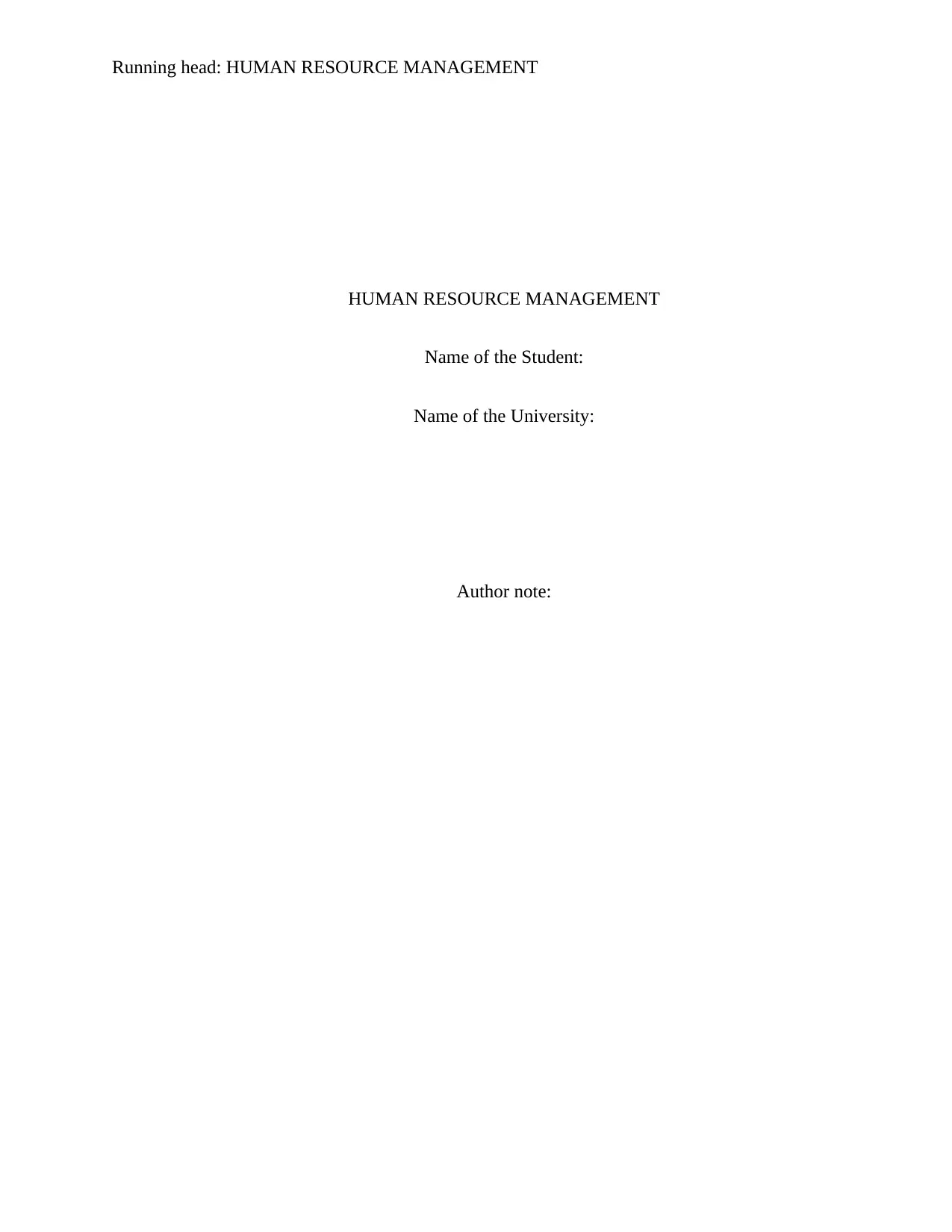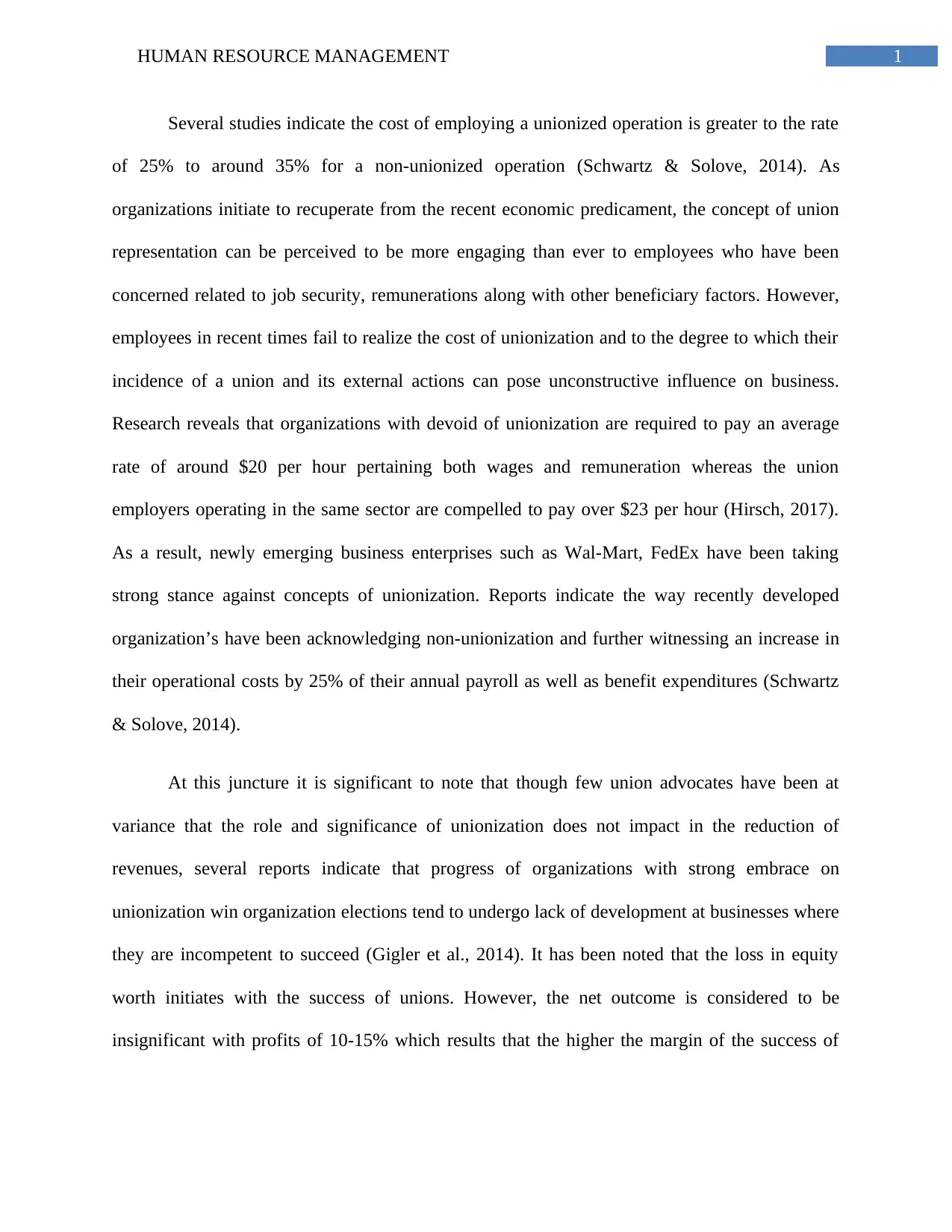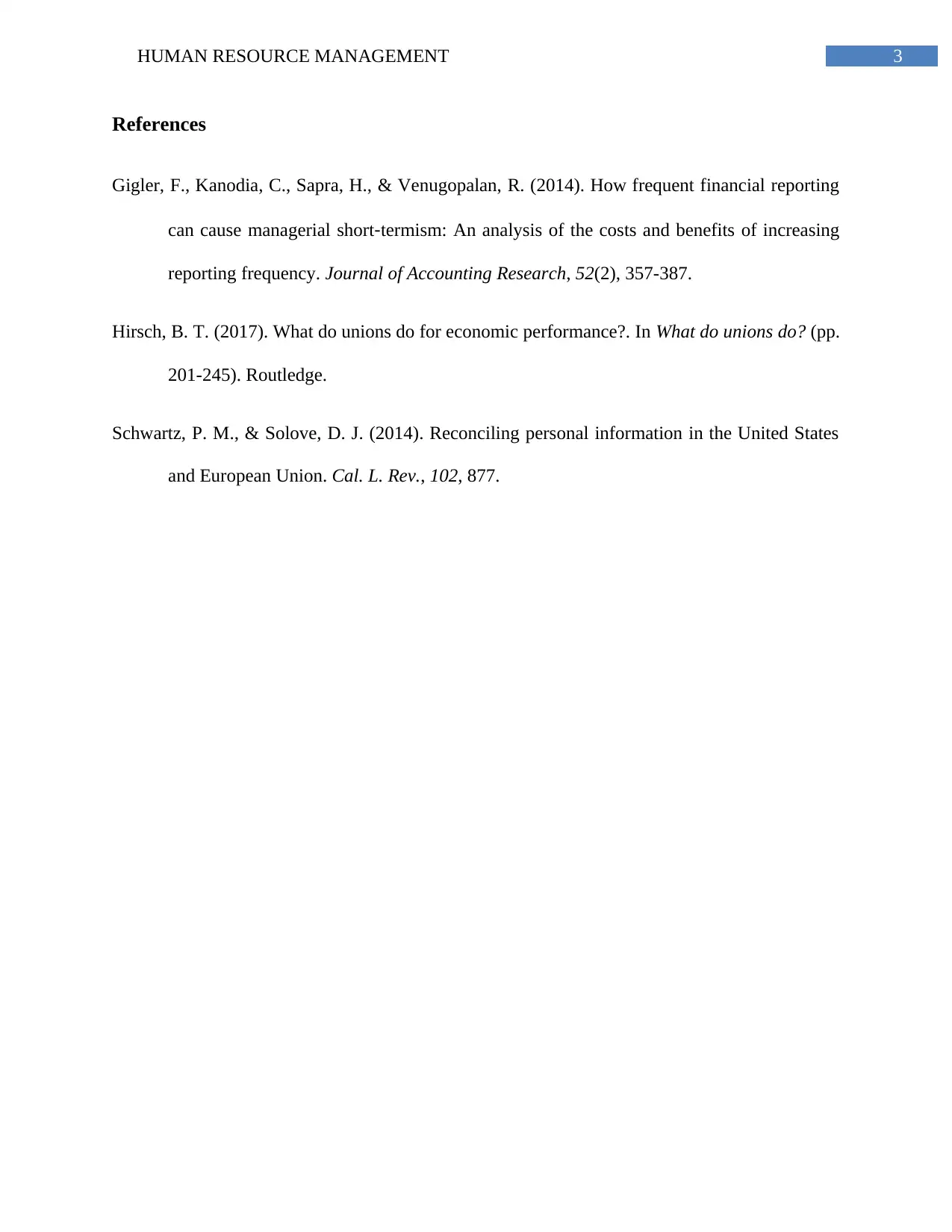Impact of Unionization on Human Resource Management Practices
VerifiedAdded on 2023/06/11
|4
|533
|89
Essay
AI Summary
This essay examines the impact of unionization on human resource management, noting that unionized operations can cost 25% to 35% more than non-unionized ones. While employees may see unions as a way to improve job security and benefits, the essay points out the potential negative financial impacts on businesses, including higher wages and operational costs. Emerging businesses often take a strong stance against unionization to mitigate these costs. Although some argue that unions don't reduce revenues, studies suggest that organizations embracing unionization may experience slower development and losses in equity worth. The essay concludes by highlighting the disinclination of unions to take ownership stakes in structured organizations due to these economic factors.
1 out of 4










![[object Object]](/_next/static/media/star-bottom.7253800d.svg)